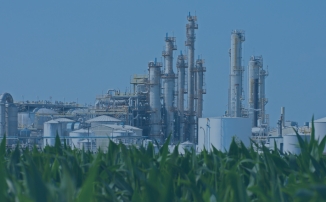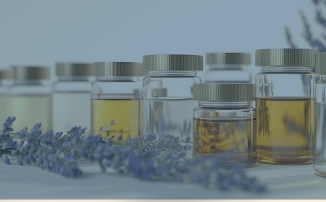BPC approves Annex I inclusion for nitrogen generated from air - a game-changer for cost-effective and sustainable production!
.png)
BPC Greenlights Ambient Air Nitrogen for Annex I Inclusion in BPR
The Biocidal Products Committee (BPC) of the European Union (EU) has approved the inclusion of nitrogen generated from ambient air in the list of low-risk substances under the biocidal products Regulation (BPR) Annex I. This decision simplifies the commercialisation of products containing the chemical, which is usually used to protect cultural heritage from harmful organisms.
Nitrogen generated in situ is a commonly used method for protecting cultural heritage that would otherwise be damaged by harsher chemicals or fumigants. The technique extracts the gas from the air and injects it into air-tight chambers around artifacts or monuments.
In 2019, the EU made in situ-generated nitrogen illegal after no company applied for its approval under the BPR. However, temporary derogations were granted for its use as a cultural heritage preservative after lobbying from the International Council of Museums (Icom) and the International Council on Monuments and Sites (Icomos).
The members of BPC have unanimously agreed to include nitrogen generated from ambient air in Annex I at its meeting on 1-2 March. Despite concerns about human health risks from the removal of oxygen, the committee decided against including a restriction in the Annex I entry but agreed to the need for risk management measures.
Conservation societies have welcomed the decision, stating that it is a major step forward in allowing the heritage sector to continue using an effective, non-toxic, and non-destructive method of pest control. The inclusion of nitrogen generated from ambient air in Annex I will simplify and accelerate the access route to market for the cultural heritage sector.
BPC opinion
In addition, the BPC discussed Union authorizations for two biocidal products, one containing peracetic acid and the other a biocidal product family containing a mixture of CMIT/MIT for product-types 6, 11, 12 and 13. The committee adopted one opinion supporting Union authorizations for the biocidal product containing the active substance peracetic acid. However, the committee did not reach a decision on the other product's use under realistic conditions, and the application will be sent back for further discussion. The BPC also called for improved guidance from the European Chemicals Agency (ECHA) on the type of data companies need to submit for tier 2 testing, in line with the European Commission's goal of promoting the use of safer and more sustainable chemicals in the EU market.
EcoMundo's support
EcoMundo supports you in the submission of a biocide active substance file or the creation of Product Authorization files for biocides (PA) with its dedicated Biocides service.
EcoMundo also offers you the possibility to join a Biocides consortium.
BPC Greenlights Ambient Air Nitrogen for Annex I Inclusion in BPR
The Biocidal Products Committee (BPC) of the European Union (EU) has approved the inclusion of nitrogen generated from ambient air in the list of low-risk substances under the biocidal products Regulation (BPR) Annex I. This decision simplifies the commercialisation of products containing the chemical, which is usually used to protect cultural heritage from harmful organisms.
Nitrogen generated in situ is a commonly used method for protecting cultural heritage that would otherwise be damaged by harsher chemicals or fumigants. The technique extracts the gas from the air and injects it into air-tight chambers around artifacts or monuments.
In 2019, the EU made in situ-generated nitrogen illegal after no company applied for its approval under the BPR. However, temporary derogations were granted for its use as a cultural heritage preservative after lobbying from the International Council of Museums (Icom) and the International Council on Monuments and Sites (Icomos).
The members of BPC have unanimously agreed to include nitrogen generated from ambient air in Annex I at its meeting on 1-2 March. Despite concerns about human health risks from the removal of oxygen, the committee decided against including a restriction in the Annex I entry but agreed to the need for risk management measures.
Conservation societies have welcomed the decision, stating that it is a major step forward in allowing the heritage sector to continue using an effective, non-toxic, and non-destructive method of pest control. The inclusion of nitrogen generated from ambient air in Annex I will simplify and accelerate the access route to market for the cultural heritage sector.
BPC opinion
In addition, the BPC discussed Union authorizations for two biocidal products, one containing peracetic acid and the other a biocidal product family containing a mixture of CMIT/MIT for product-types 6, 11, 12 and 13. The committee adopted one opinion supporting Union authorizations for the biocidal product containing the active substance peracetic acid. However, the committee did not reach a decision on the other product's use under realistic conditions, and the application will be sent back for further discussion. The BPC also called for improved guidance from the European Chemicals Agency (ECHA) on the type of data companies need to submit for tier 2 testing, in line with the European Commission's goal of promoting the use of safer and more sustainable chemicals in the EU market.
EcoMundo's support
EcoMundo supports you in the submission of a biocide active substance file or the creation of Product Authorization files for biocides (PA) with its dedicated Biocides service.
EcoMundo also offers you the possibility to join a Biocides consortium.







